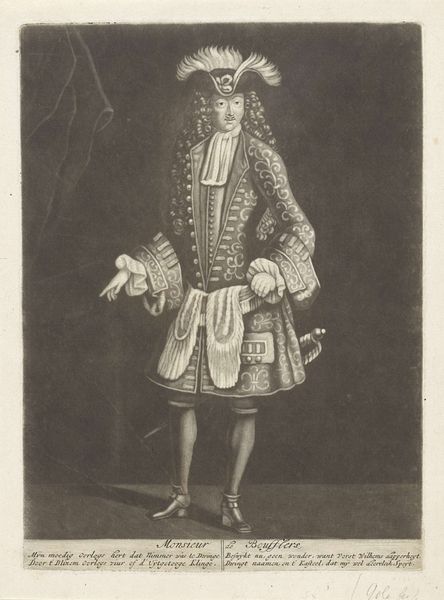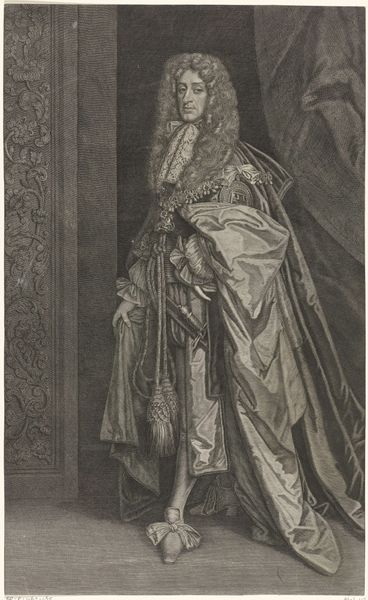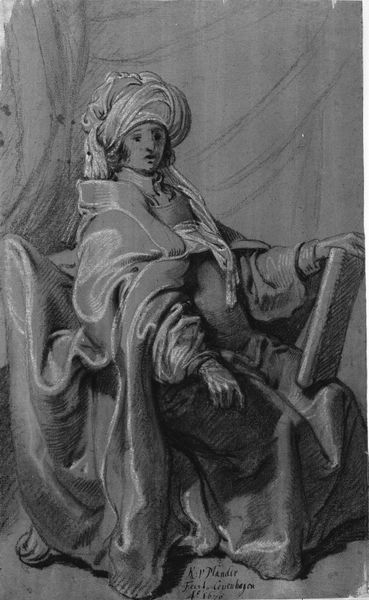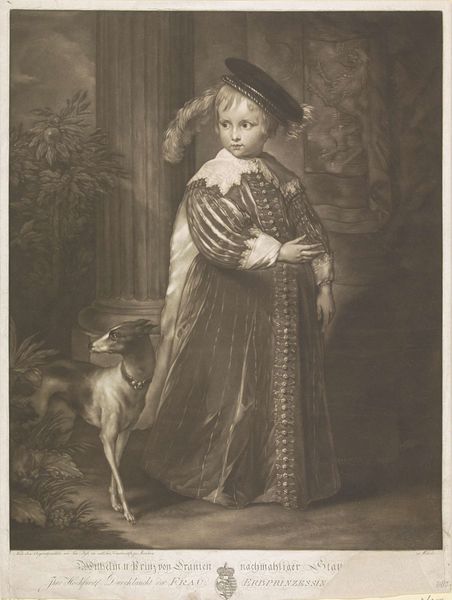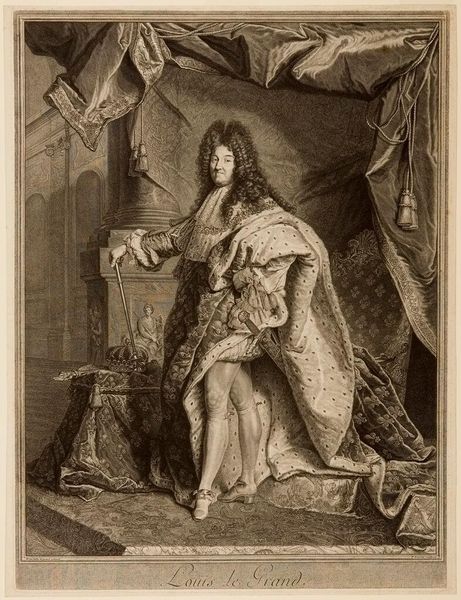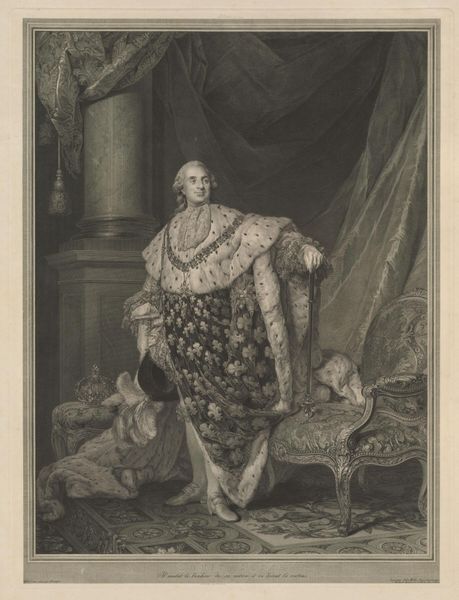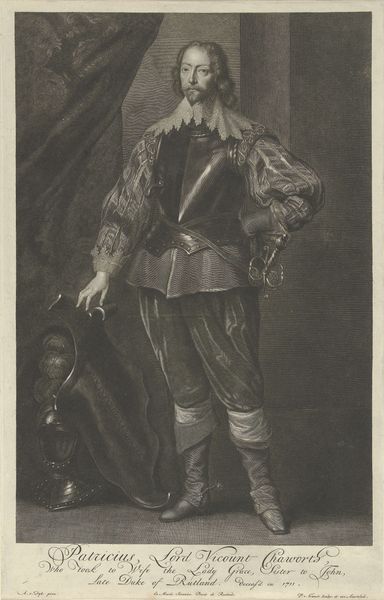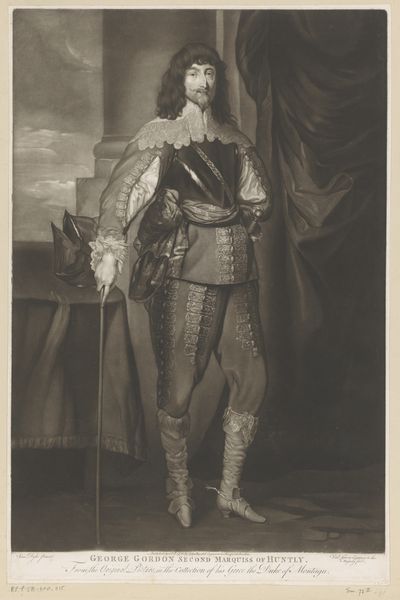
Joseph Crying in his Chamber after Having Seen his Brother Benjamin Again 1685
0:00
0:00
painting, oil-paint
#
portrait
#
narrative-art
#
baroque
#
painting
#
oil-paint
#
black and white
#
monochrome photography
#
history-painting
#
monochrome
#
monochrome
Dimensions: 54.5 cm (height) x 42 cm (width) (Netto)
Editor: This is Aert de Gelder's "Joseph Crying in his Chamber after Having Seen his Brother Benjamin Again," painted in 1685 using oil paint. I'm immediately drawn to the figure's elaborate costume, almost theatrical. What stands out to you when you look at it? Curator: The performative aspect is key, absolutely. Consider the context: De Gelder, deeply influenced by Rembrandt, engaged with history painting not just as illustration but as a staged production. Note how the use of impasto mimics textile richness, giving value to the very act of applying paint. What does that say about the societal status of craft versus the perceived intellectualism of "high" art? Editor: That’s fascinating! It’s like he’s blurring the line between material reality and symbolic representation. Curator: Exactly. The monochrome treatment, in this digital copy, obscures original color, but perhaps highlights this tension even further. He's emphasizing texture and form over chromatic realism. Think about the cost of materials, too—even with limited pigments, the labor involved would still make such pieces a marker of wealth and patronage. Editor: So, the very materiality speaks to economic and social structures of the time? Curator: Precisely. The painting isn’t just depicting a biblical scene; it’s participating in a larger conversation about labor, value, and artistic production in 17th-century Netherlands. How does knowing that change how we read the figure's emotion or that incredible hat? Editor: It makes me think about how art objects are always products of their specific time, not just aesthetic statements. I learned a lot today, thank you! Curator: Indeed. And hopefully, a deeper look at the materials, production and original setting for artworks might reshape what is even worth examining and what not!
Comments
No comments
Be the first to comment and join the conversation on the ultimate creative platform.




